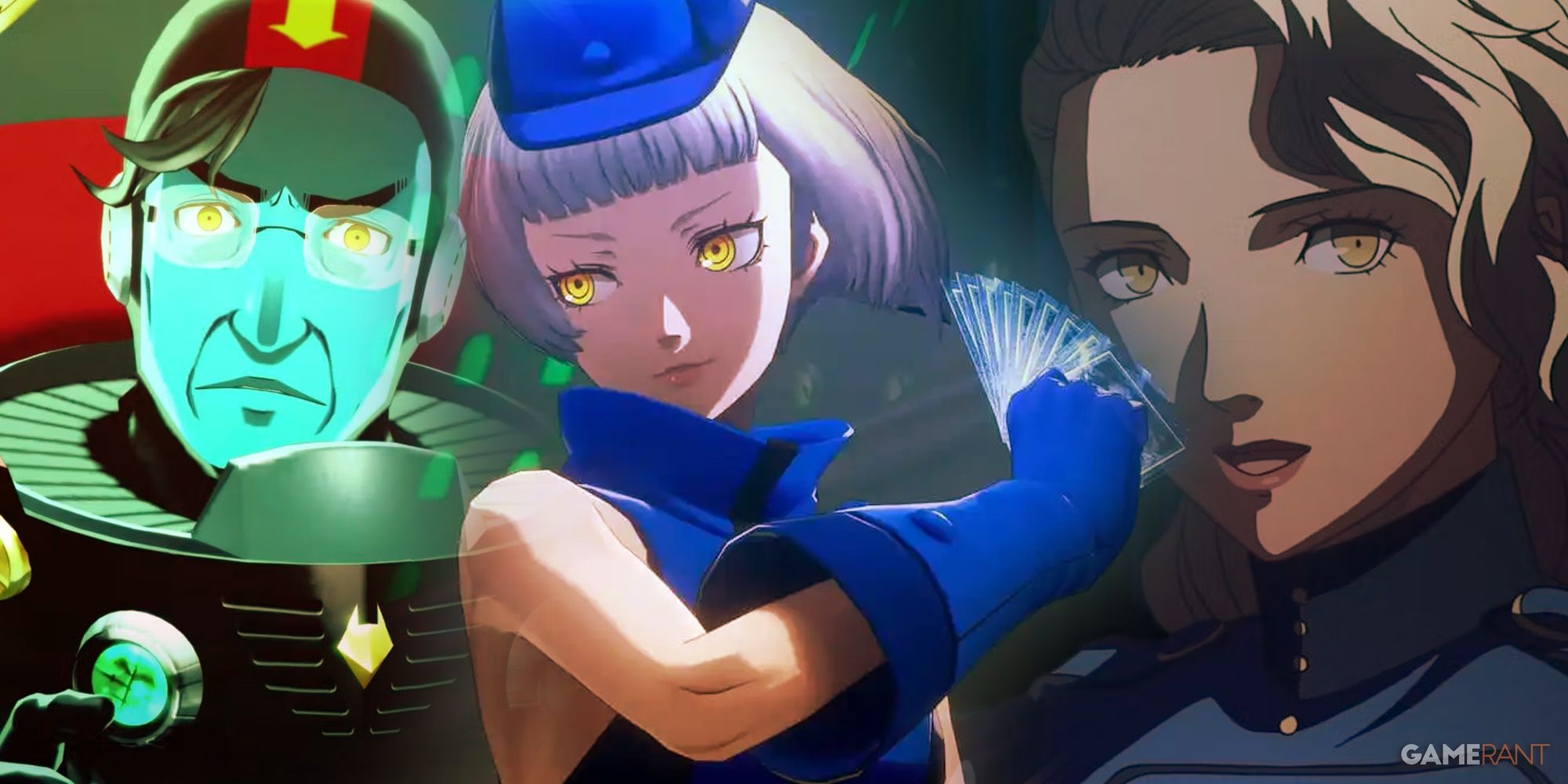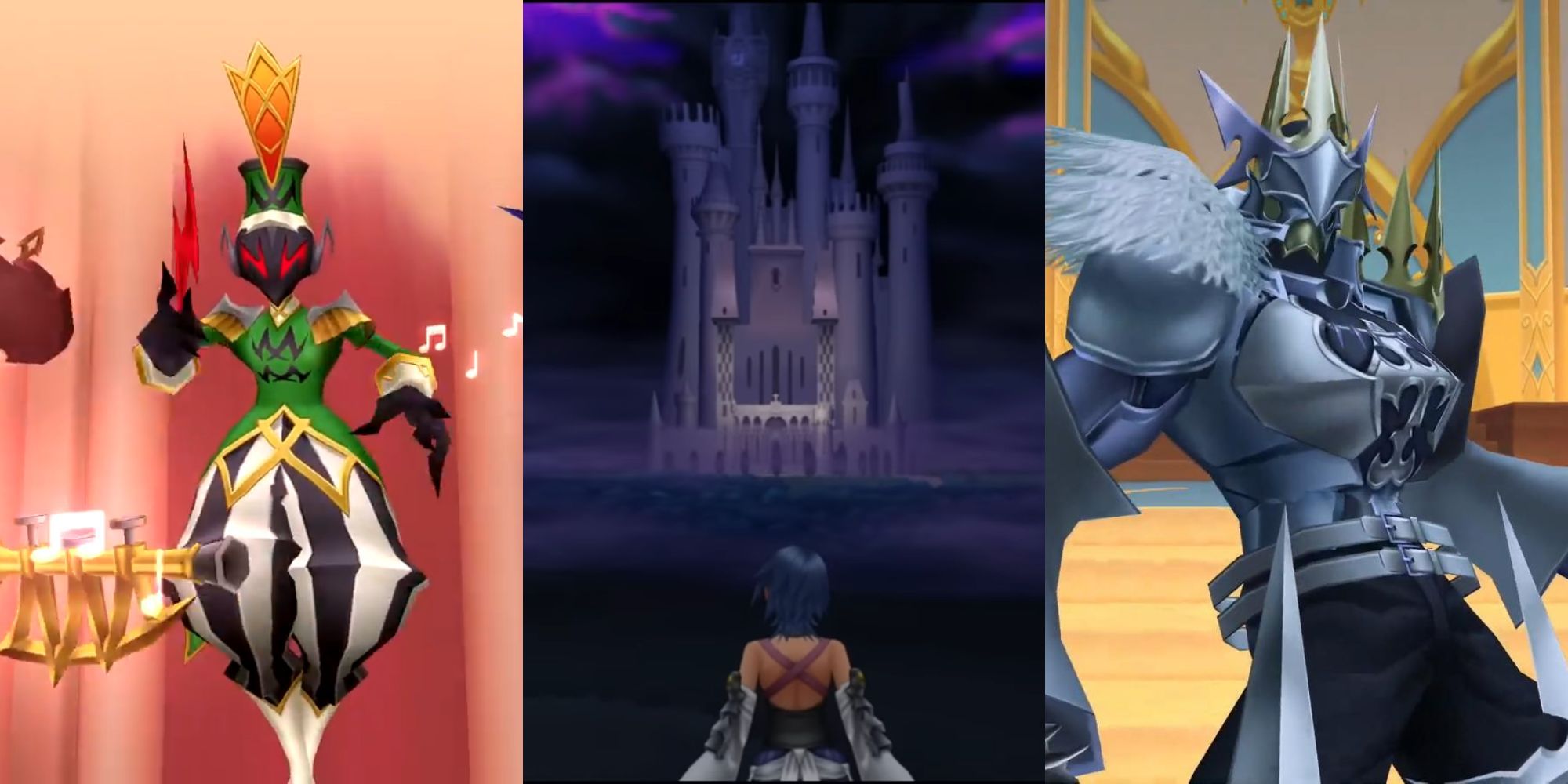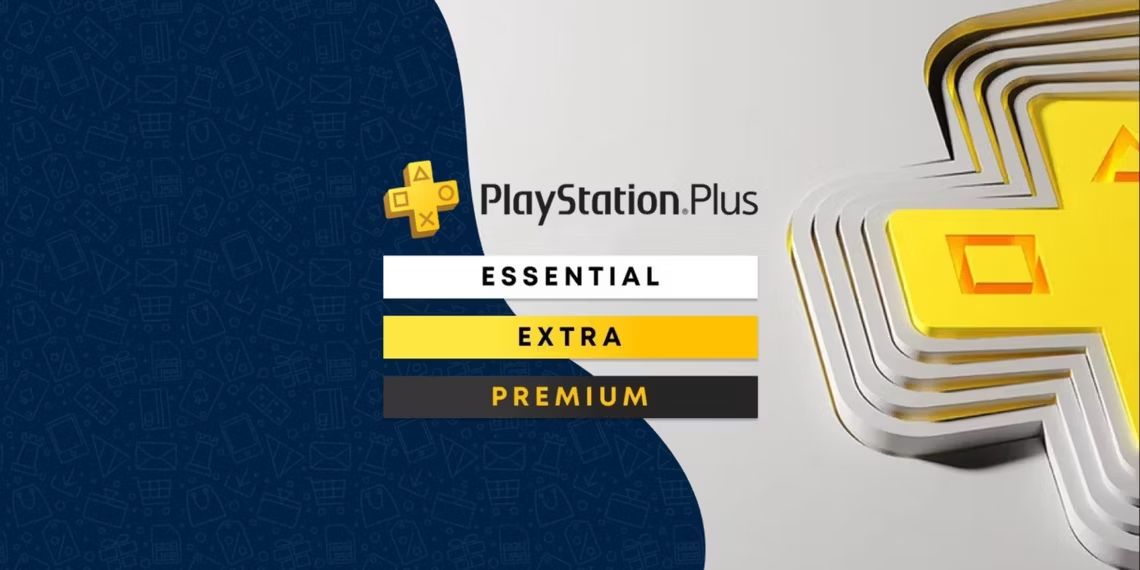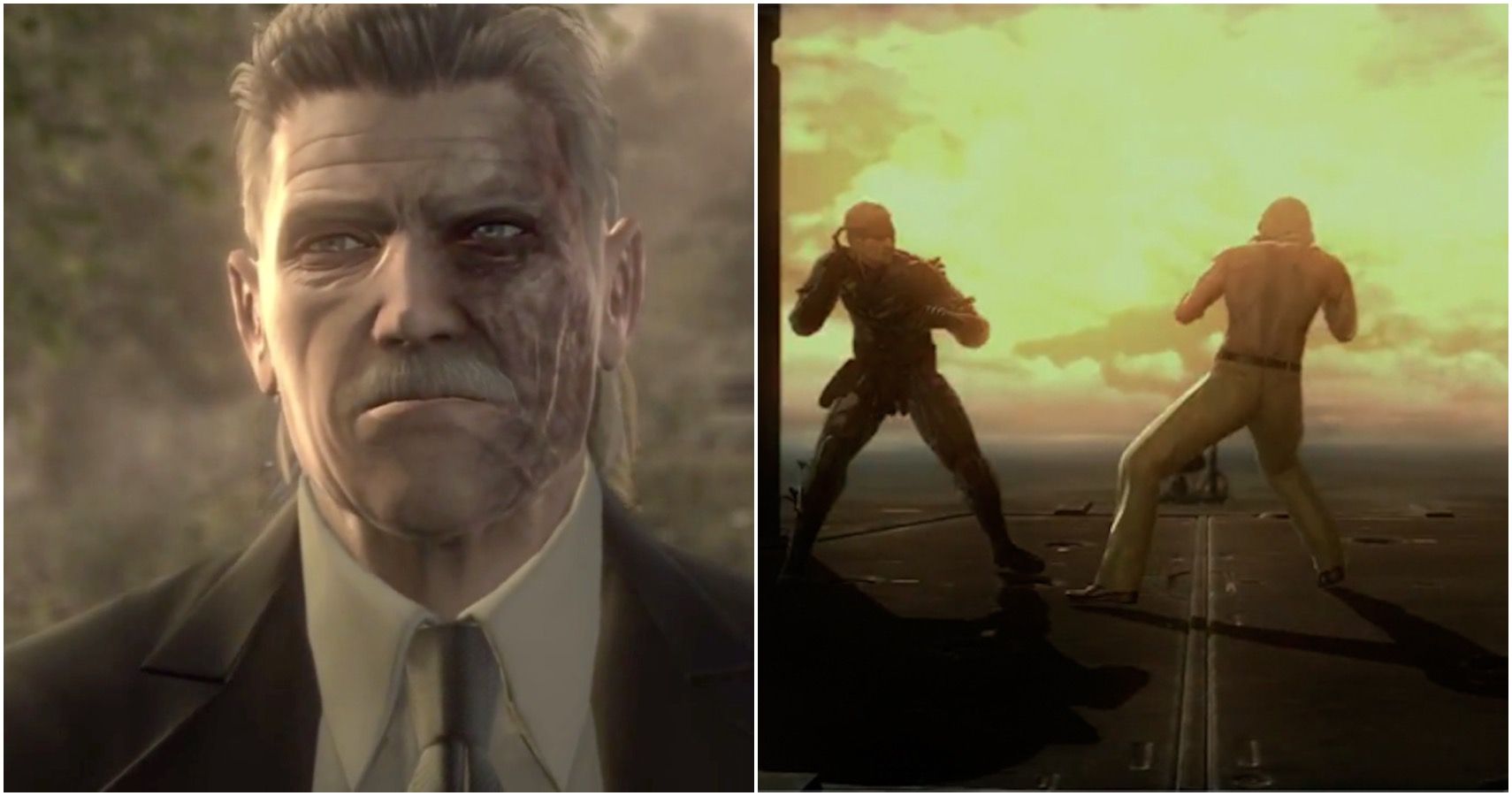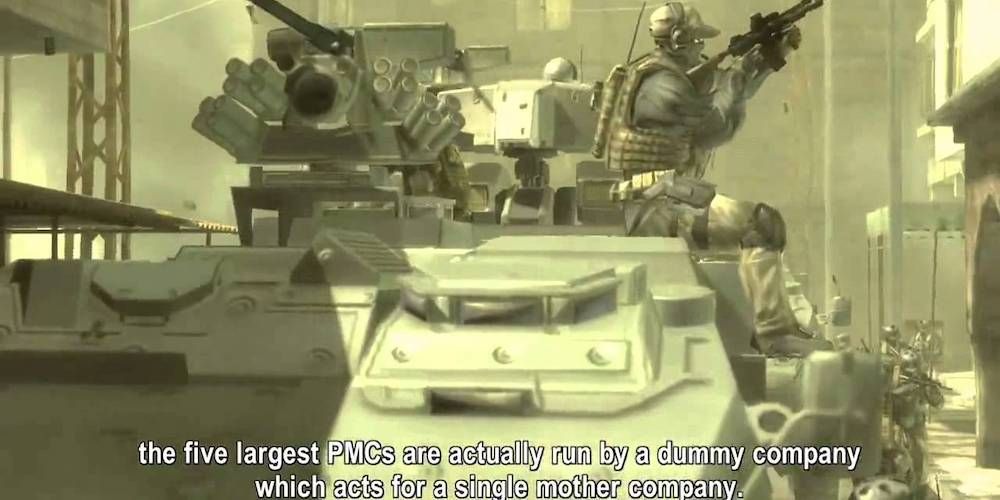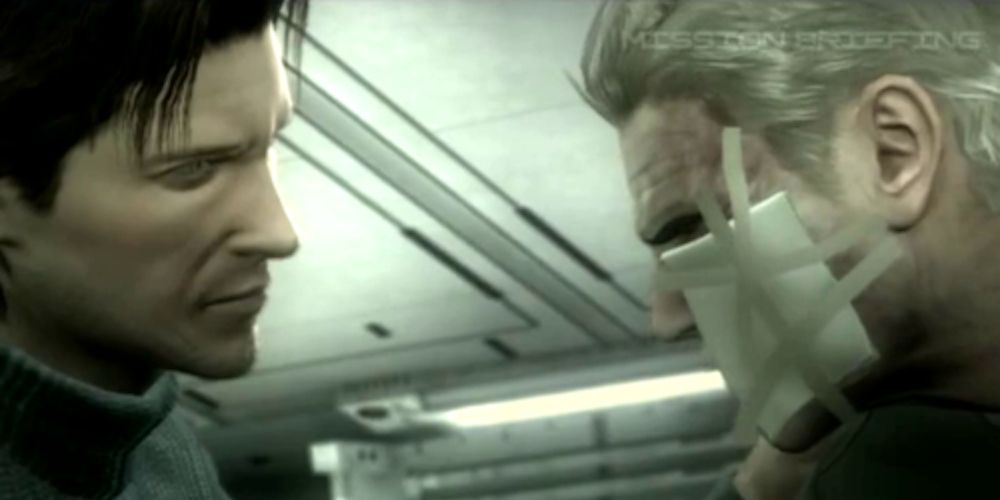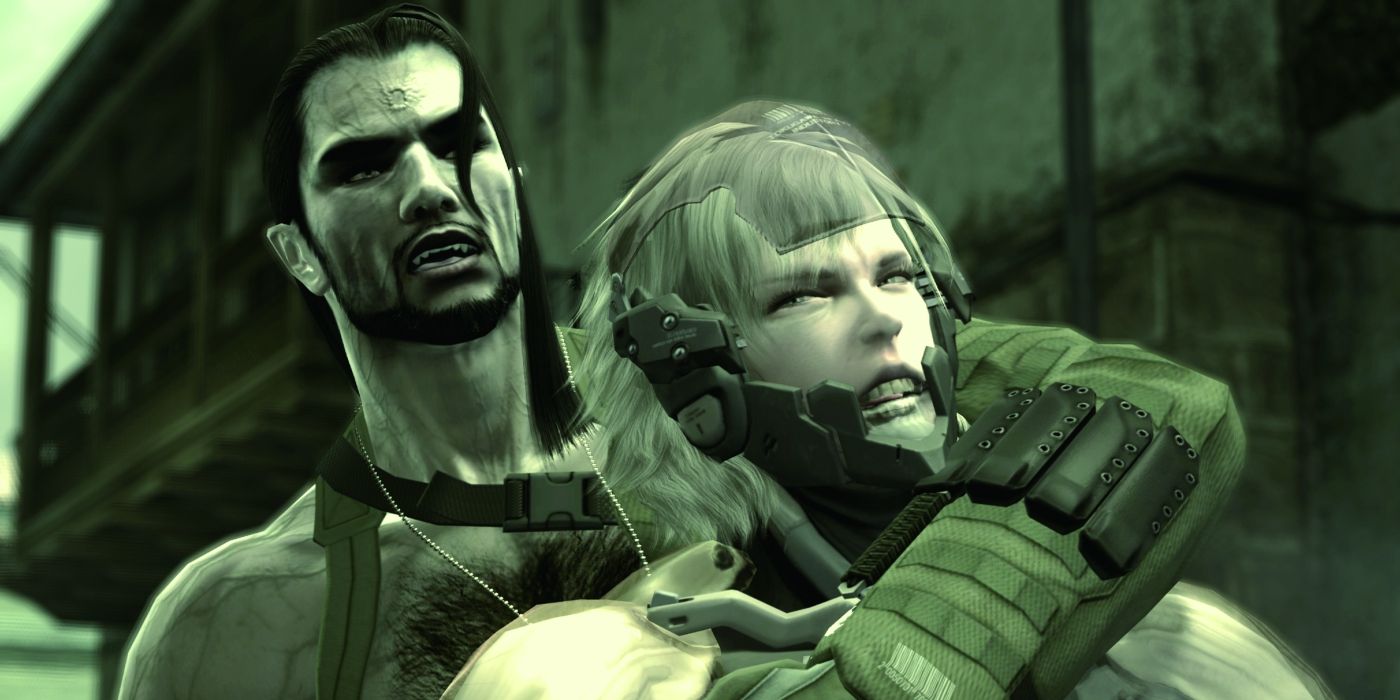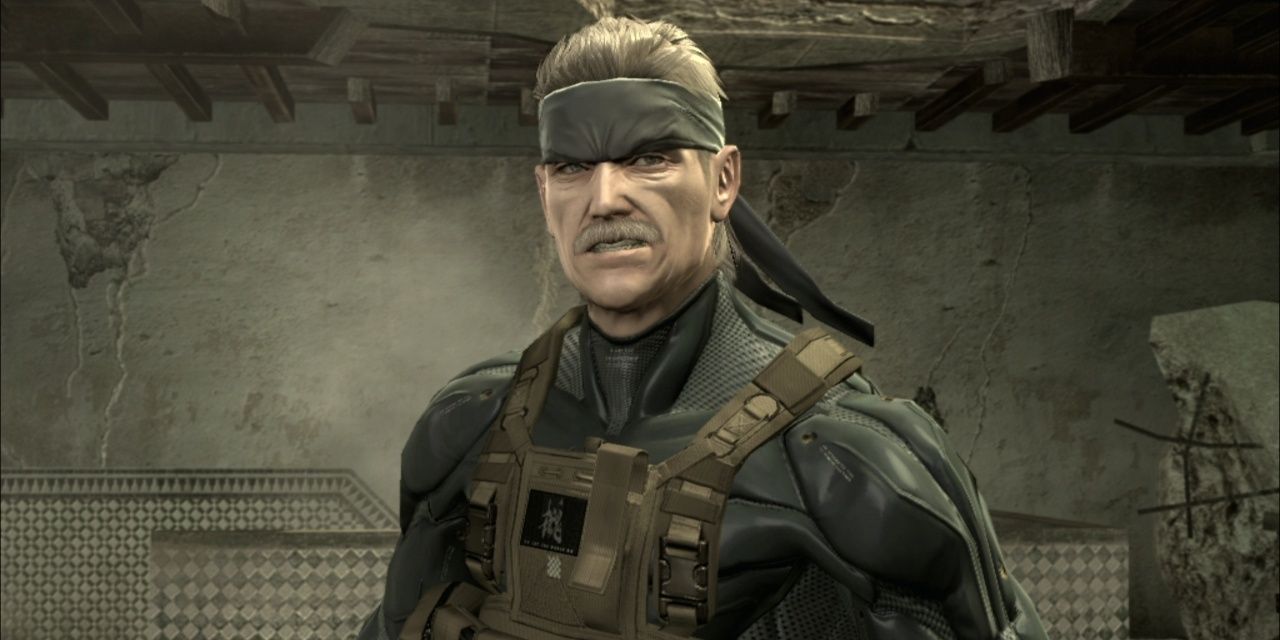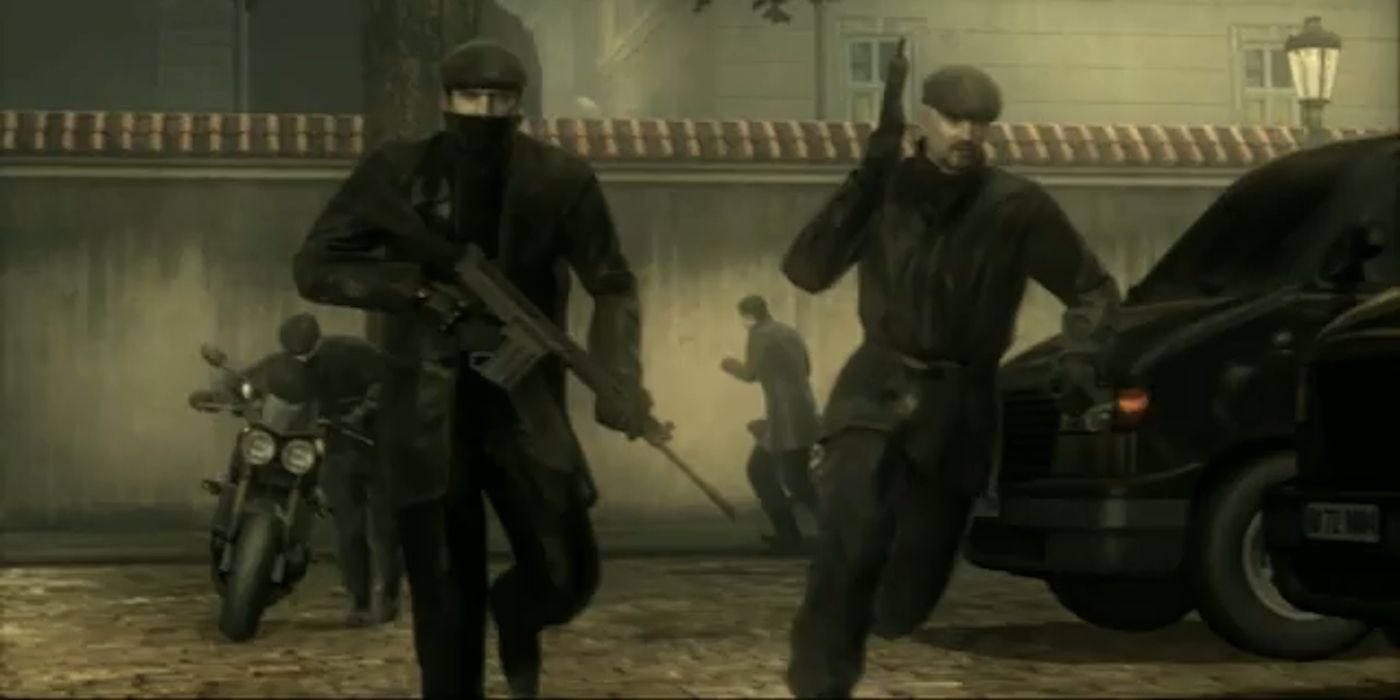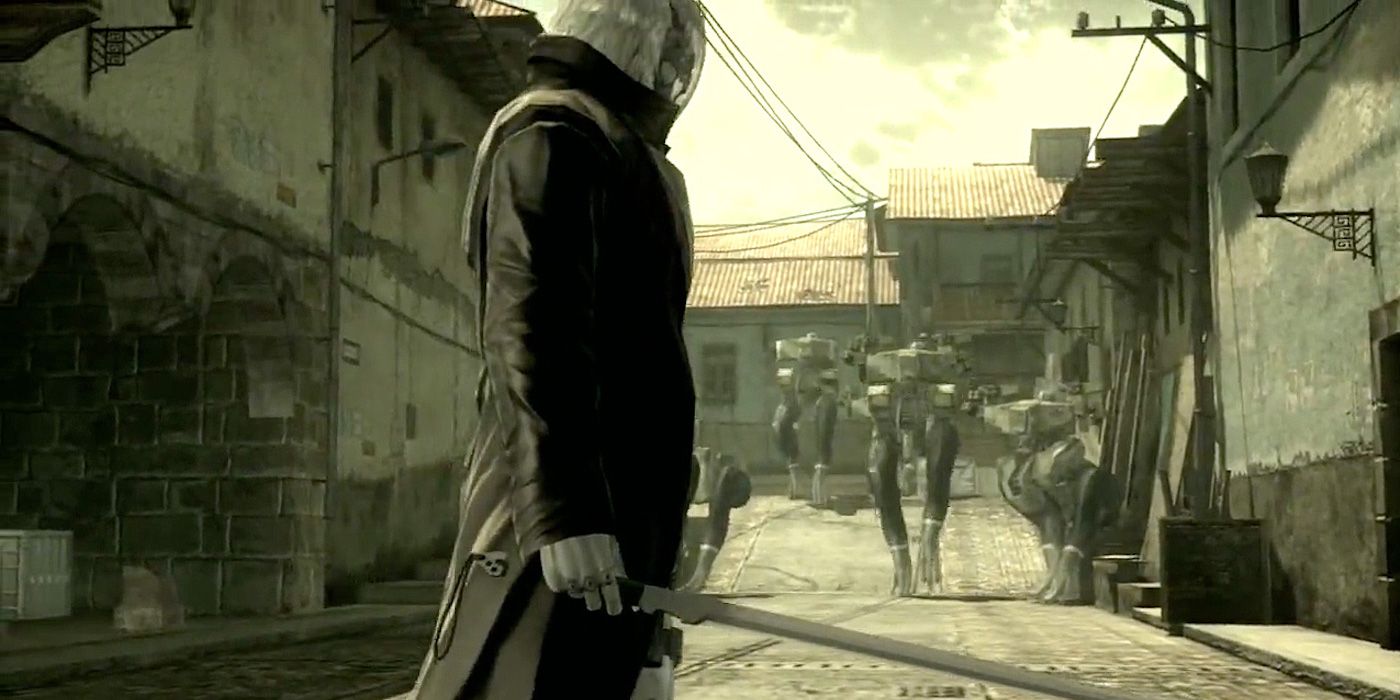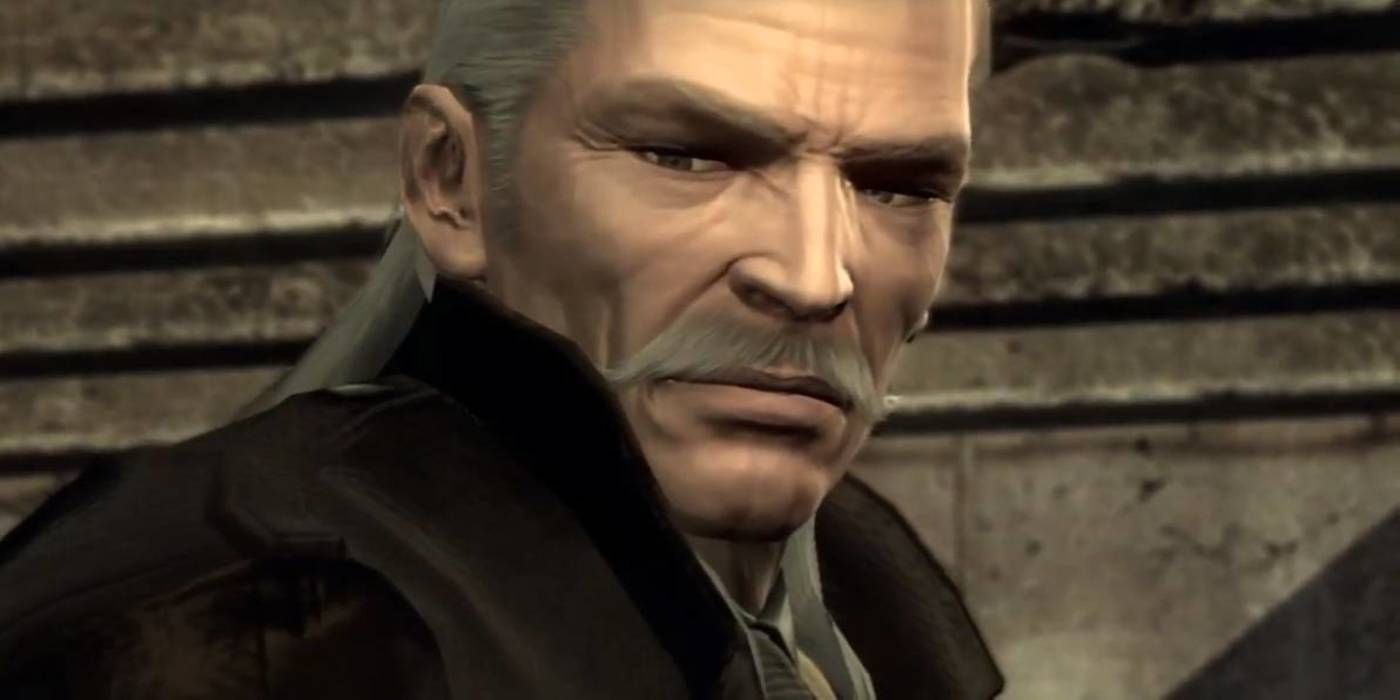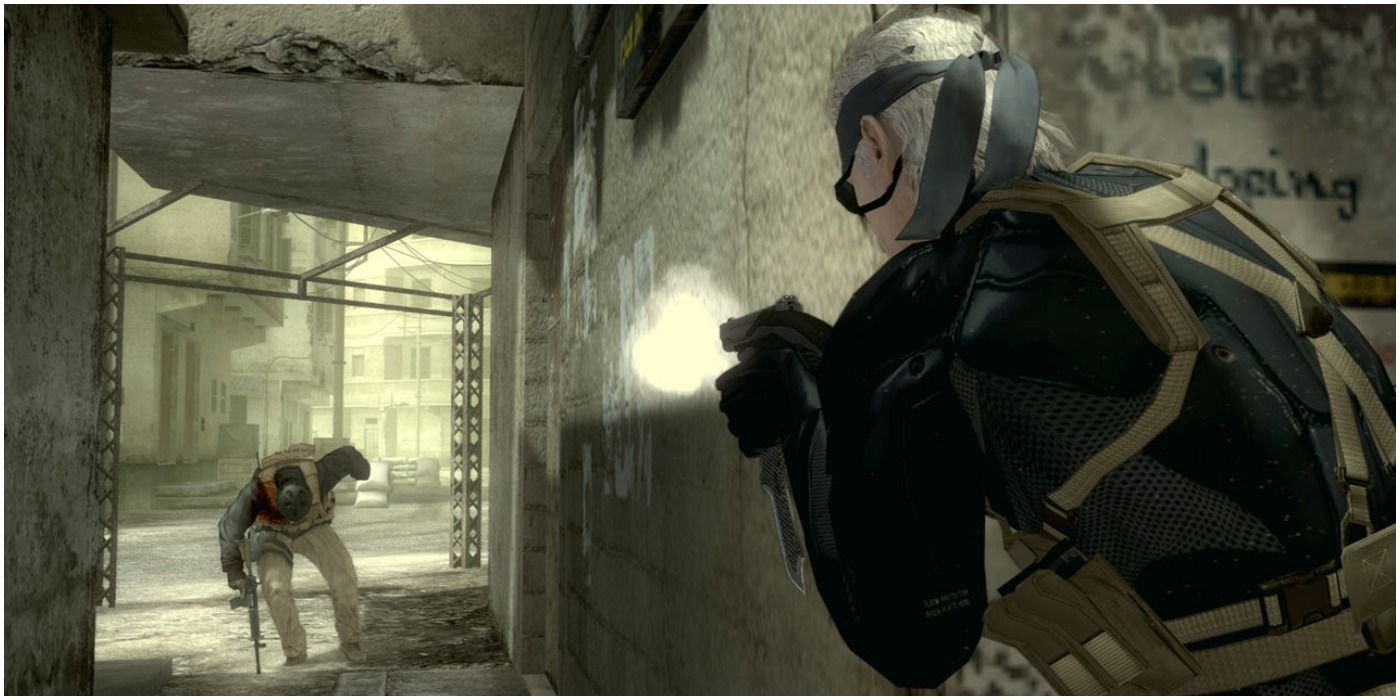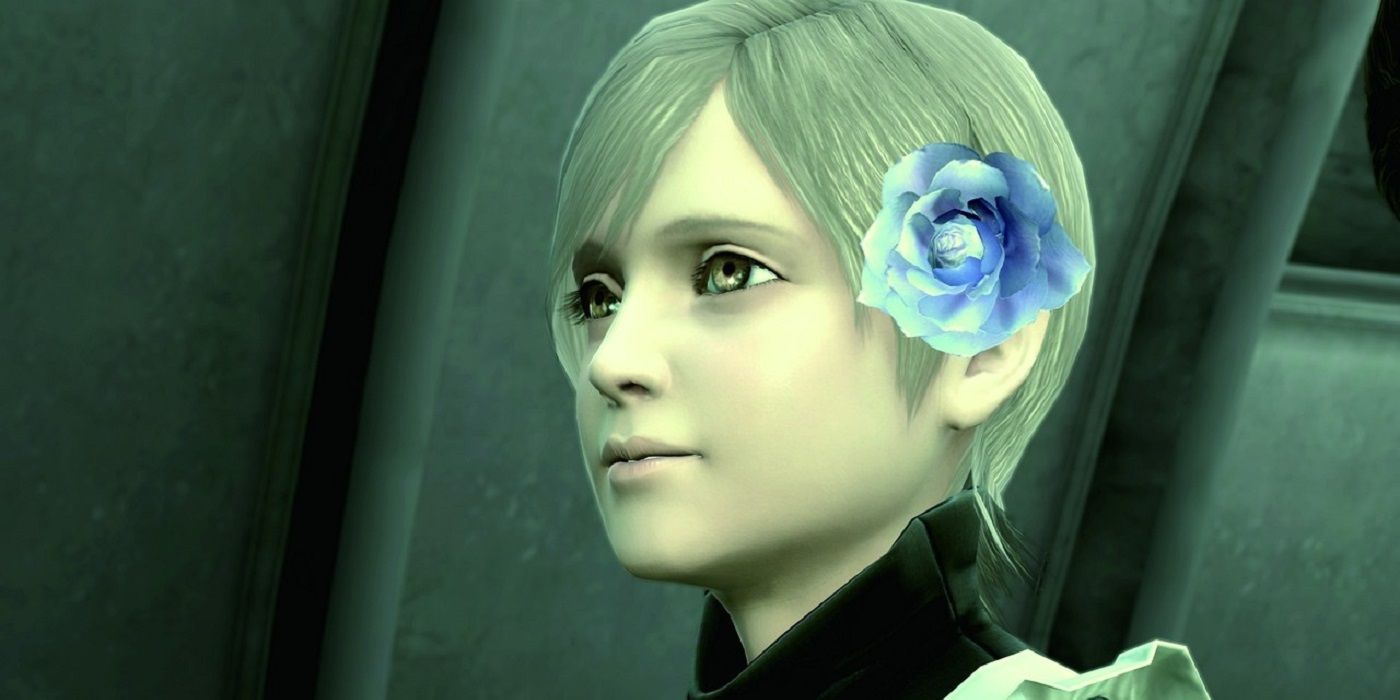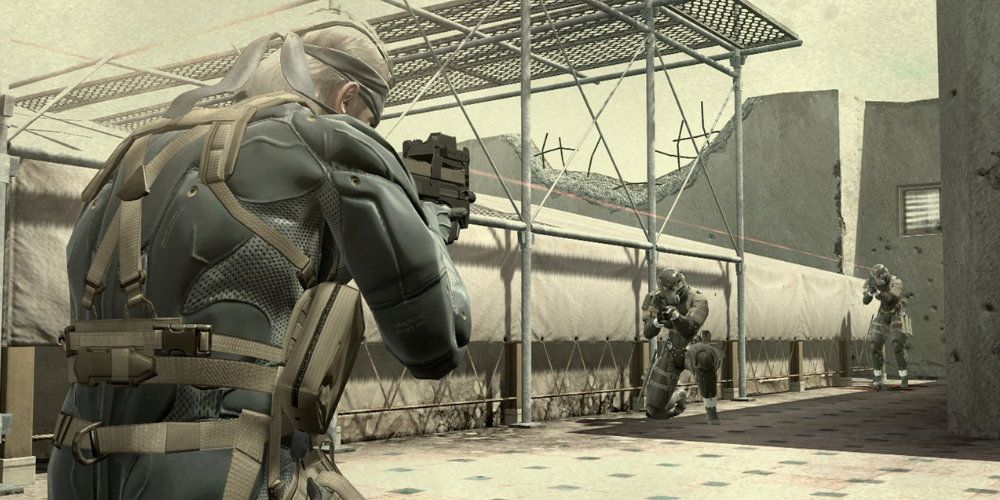Metal Gear Solid 4: Guns of the Patriots was a premier PS3 exclusive. It was hyped up for years before release. While it was not the last game in the Metal Gear Solid franchise, it did wrap up Solid Snake's storyline after 20 years of games starring the protagonist.
The game's reception was initially overwhelmingly positive, though modern criticism is more divisive. Regardless of what fans think of it, the story behind its development is extremely interesting, as evidenced by the ten facts below. Even those who do not like it have to commend the attention to detail and effort Hideo Kojima and his team put into Metal Gear Solid 4.
10 Shuyo Murata Was Meant To Be The Director
Fans remember the first announcement trailer from 2005 announcing the director as Alan Smithee. This was a joke as the name is usually used as a pseudonym. This is also a reference to Hideo Kojima's desire not to direct a follow-up to Metal Gear Solid 3.
Shuyo Murata, who co-wrote the third numbered entry, was meant to direct the project, with Kojima taking on a producer role. Kojima ended up directing, though Shuyo Murata still worked on Metal Gear Solid 4 as a co-director.
9 Snake And Otacon Were Not Going To Live Through The Game
Many thought Solid Snake was going to die by the end. He survives, but Hideo Kojima's original ending had both Snake and Otacon losing their lives.
They were going to turn themselves in after the conflict subsided and they were both going to be given the death penalty for their crimes. It would have been a real downer. The rest of the development team convinced Hideo Kojima to get rid of this ending.
8 It Was The First PS3 Game To Ship On A Dual-Layer Blu-ray Disc
Blu-ray has an impressive amount of space available to fit games. Metal Gear Solid 4 uses an enormous amount of data. As a result, it became the first PS3 game to utilize a dual-layer Blu-ray disc. Instead of 25 gigabytes, the disc on which the game shipped holds twice as much data.
Even though the game is about sixteen hours long, it includes a variety of locations, characters, and assets, ultimately justifying the amount of space used up.
7 It Cost Between 50 And 70 Million Dollars To Make
While the exact budget is still unknown, Metal Gear Solid 4 is reported to have cost anywhere between 50 and 70 million dollars to make. This is a particularly high number for game budgets in 2008. Even though the Metal Gear franchise was popular, Metal Gear Solid 4 was coming out exclusively on a new console with a low install base, making it a risk.
It was successful, though, selling more than six million copies.
6 The Developers Travelled To Morocco, Peru, and Prague
For Metal Gear Solid 2, the team traveled to New York City, and for Metal Gear Solid 3, the team captured sounds and images of real jungles for reference. Since Metal Gear Solid 4 takes place in multiple settings, the developers took trips to numerous locations; mainly Morocco, Peru, and Prague.
Even though none of the countries are given names in MGS4, the trips helped faithfully bring each of them to life.
5 The Review Limitations
A small controversy sprouted around the game's release regarding review limitations. Apparently, reviews could not mention the lengths of the cutscenes in addition to the install sizes.
Because of this, several publications announced their intention to not review Metal Gear Solid 4 until a later time. Some saw this as Konami hiding the bad parts about its game.
4 The Differences Between Voice Actors For Liquid Ocelot
In the English language version, Liquid Ocelot is voiced by Patric Zimmerman, who is the voice of Revolver Ocelot. This was apparently Hideo Kojima's intention.
In Japan, the actor who played Revolver Ocelot, Koji Totani, passed away in 2006, so Banjo Ginga, Liquid's voice, takes on the role. Some fans were disappointed Cam Clarke did not return, especially because he voices Liquid in Metal Gear Solid 2 when the character takes over Ocelot's body.
3 Some Of The Development Team Went Through Military Training
In a making-of documentary, Hideo Kojima expresses the need for him and his team to at least slightly understand how being a soldier works in order to make a game like Metal Gear Solid 4. He compares it to the futility of him writing a car chase as a child.
As a result, Kojima and some of the other staff members did some military training in order to faithfully recreate a soldier's movement in the game.
2 Some Of Sunny's Dialogue Was Changed Late In Development
Hideo Kojima is particularly meticulous during a game's production. Late in the development of Metal Gear Solid 4, he decided to change some of Sunny's dialogue when all the recording was already done.
Not only was it extra money to bring in the actor again, but it was also a huge amount of work for the programmers. In addition to dialogue in the first two acts, the last line of the game also underwent adjustment.
1 The Game Went Gold On February 29th, 2008
The game was finally completed, or went gold, on February 29th, 2008. Only after this did the press finally have a firsthand look at the product. It would still be several more months until Metal Gear Solid 4's release, as the game came out on June 12th of the same year. Guns of the Patriots was announced three years before its actual release, so fans were anticipating the game for a long time.
Unlike some big releases these days, the game ran fairly smoothly upon release, though patches later on down the line added trophy support and let players install the whole game from the start instead of installing individual acts at separate times.

